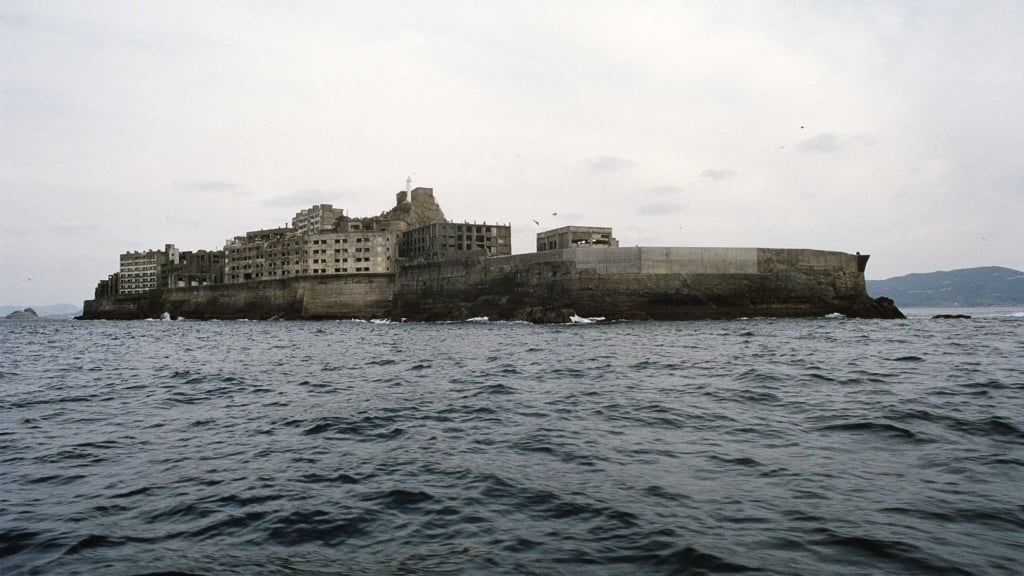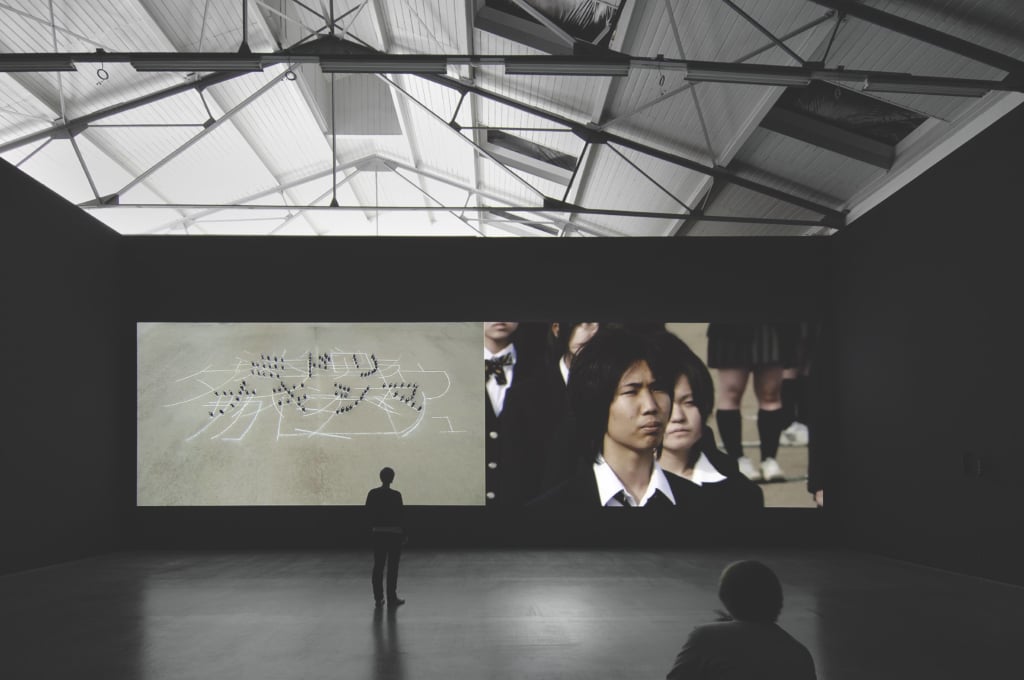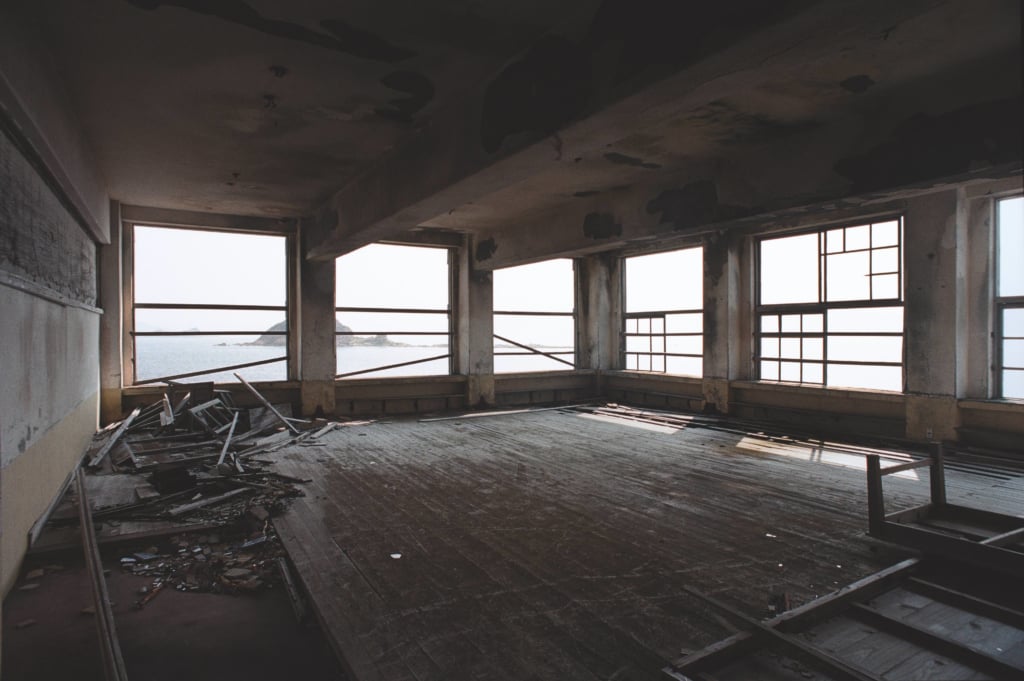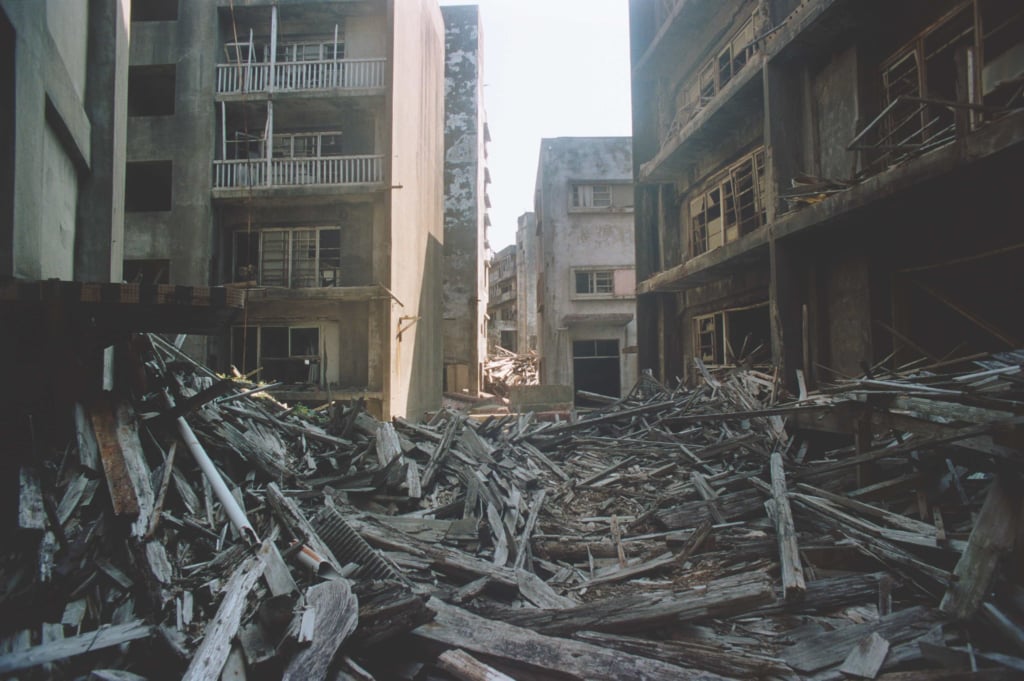Collective Memory and Sci-Fi Futures in Fischer & el Sani’s Film
The artist duo met the inhabitants of Hashima island, famous for being the set for the 2002 movie ‘Battle Royale.’

Spelling Dystopia, HD, 2 channel video installation, 17 min., production still, 2009, courtesy of the artists, copyright VG Bild Kunst, Bonn, 2009 and the artists
With their 2008 work Spelling Dystopia, a dual-screen film with an accompanying publication, artist duo Nina Fischer and Maroan el Sani travelled to Hashima Island in Japan. Once the most densely populated place on earth, this island of Nagasaki now lies uninhabited.
The artists have, over the years, developed a prolific body of work using the mediums of film, photography, and installation. Inspired by notions of utopia in relation to the trajectory of modernity, one major focus of their oeuvre is the depiction of urban space within this framework. They look at the way in which such spaces are inscribed in history, collective memory, and contemporary usage.
From dense population to abandonment
‘The density of the population in Hashima was higher than that of Tokyo’s most crowded parts today,’ the artists tell Pen in an interview. From 1887 to 1974, the man-made island’s coal mines were instrumental to the industrialisation of Japan; however, when they closed due to the depletion of coal reserves, Hashima was abandoned. The island has since garnered a reputation as a symbol of aggressive extractivism while having also been immortalised in manga and video games as the ghost island.
This eerie notoriety was further solidified when Hashima became the centre of the 2002 bloody science fiction film Battle Royale. ‘One of our artistic research topics at that time focused on abandoned places as a metaphor for major changes in society,’ explain the duo.
Historical pasts and fictional futures
Nina Fischer and Maroan el Sani’s film interrogates the shifts in collective memory by splicing accounts of the island’s history from the perspectives of both a former inhabitant of the island and two high school students, the latter of whom recount fragments of the infamous Battle Royale. ‘The island appears almost as their fantasy, an imaginary playground for their games, where various images and layers of reality and fiction have already mingled,’ explain the artists. Merging past and future, history and fiction, the film interrogates an overarching characterisation of the island through violence, albeit in radically different forms.
‘Aided by its appearance in Battle Royale the island has since taken on a ghostly, mythic status in the national imagination. There is a fictionalised shift in collective memory. Memory changes with the media that is produced at these places. By producing a new work about a place like Hashima Island, we are not only bringing memory back to the contemporary stream of media consumption, but also influencing how it will be remembered in the future.’
The artists have a prolific oeuvre, with a number of films, sculptures, and photography projects to their name, varying greatly in historical and geographical range. In 2020, they created the 20-minute film, Appropriation takes you on a weird ride, investigating what they call on their website ‘a strange German enthusiasm for Native Americans in relation to contemporary racism and its deep colonial roots.’
Spelling Dystopia, which accompanies the work, was published by Christoph Keller Editions in 2012 and compiles sketches, research material, production stills, a series of photographic images, and a manga realised in collaboration with artist Kasuga Tsubaki. More information on the project can be found on the artists’ website.

Spelling Dystopia, HD, 2 channel video installation, 17 min., installation view, Galerie Eigen+Art. Leipzig, 2009, courtesy of the artists, copyright VG Bild Kunst, Bonn, 2009 and the artists

Spelling Dystopia, HD, 2 channel video installation, 17 min., production still, 2009, courtesy of the artists, copyright VG Bild Kunst, Bonn, 2009 and the artists

Spelling Dystopia, HD, 2 channel video installation, 17 min., production still, 2009, courtesy of the artists, copyright VG Bild Kunst, Bonn, 2009 and the artists
TRENDING
-
Ishiuchi Miyako, A Singular Perspective on Women
Recipient of the 2024 Women in Motion Award, the photographer creates intimate portraits of women through the objects they left behind.

-
Recipe for Ichiraku Ramen from ‘Naruto’ by Danielle Baghernejad
Taken from the popular manga with the character of the same name who loves ramen, this dish is named after the hero's favourite restaurant.

-
Namio Harukawa, Master of Japanese SM Art
'Garden of Domina' offers a dive into the world of an icon of ‘oshiri’, whose work has now reached a global audience.

-
The Tattoos that Marked the Criminals of the Edo Period
Traditional tattoos were strong signifiers; murderers had head tattoos, while theft might result in an arm tattoo.

-
The Emperor of Japanese Porn is Now the Star of a Netflix Series
Deliciously funny, The Naked Director especially succeeds in reviving the atmosphere that was so characteristic of 1980s Japan.





